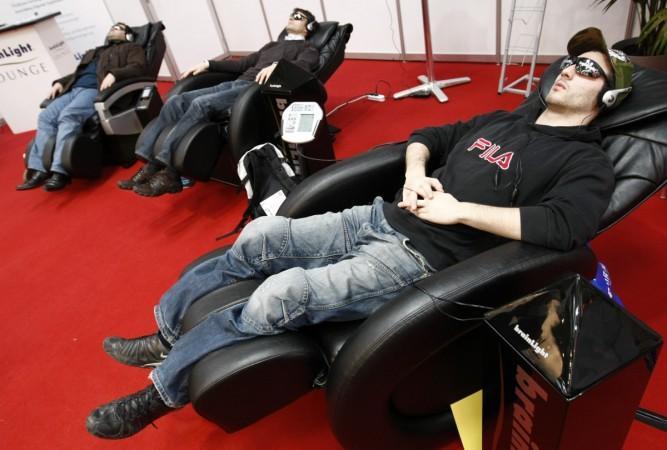
A new kind of movie watching experience will have each viewer watch a film that is twisted, tweaked and fine-tuned to their own "brainwaves". This means the viewer's actual physical brain will decide the tone, music, storyline, characters, and final outcome of the movie.
In fact, there is already such an experimental 27-minute movie called 'The Moment' that is set to be screened at the Sheffield International Documentary Festival in June, reports the MIT Technology Review. The film's plot follows a future where there exists a global network of brain to computer links. Using these links, the powers that be allow complete distribution of information, as well as total surveillance of every human's thoughts.
Similar to the mind-reading technology that characters in the film are subjected to, the director of the movie wants to make use of human brain waves to control the music and pacing of the film as it is screened in movie halls.
The director of the film, Richard Ramchurn, has reportedly started screening this movie to small test audiences already. In these tests, one audience member will be seated with a helmet-like EEG contraption that can read brainwaves. While the actual hard science behind what constitutes "brainwaves" is still dubious at best, the screenings produced different versions of the film for different people when they watched and had the film tuned to their brains, says the report.
"Often, you get bogged down in telling stories in a particular way in the cinema, so it could be interesting to see how that would progress from a director's perspective," says Jacob Gaboury, an assistant professor of film and media at the University of California, Berkeley.
When the viewer's brainwaves indicated that they were losing interest, for example, the music on screen would change, the scene would jump to a different character, or there might be other real-time edits, based only on the viewer's mind and brain activity.
One audience member's brain guides the entire film, so the rest of those seated could end up seeing different scenes transitioning among them at various points in time within the set narrative. While the central core of the story does not change, Ramchurn pointed out that he needed to film a lot more material that would be needed for a typical 30-minute film just to build up sufficient potential plot variations.
While this seems like quite a revolutionary idea, the director points out that it makes no sense for most to watch a movie from what is essentially another person's point of view because people tend to focus on different parts of the plot and screen at different times. So a film personalised to one person's likes and dislikes might turn out to be boring for someone else.
This film is controlled by a single person, so Ramchurn doesn't think it would work in a movie theatre. He says that he is working on ways in which these films could work for a larger audience. One way to do this is by letting three people compete to be the main controller. This would be calculated as scores based on certain cues from the viewer like blinking, for one example. Another way could be by making an average of the three reactions to determine what happens next on screen.
This way of watching films might not take off, but outside of the movie industry, gaming and other neuroscience-based technology can make tangible strides in understanding the way human brains function. Will it make neurologists be more in demand?









!['Had denied Housefull franchise as they wanted me to wear a bikini': Tia Bajpai on turning down bold scripts [Exclusive]](https://data1.ibtimes.co.in/en/full/806605/had-denied-housefull-franchise-they-wanted-me-wear-bikini-tia-bajpai-turning-down-bold.png?w=220&h=138)



